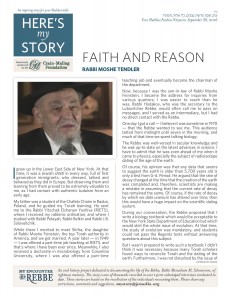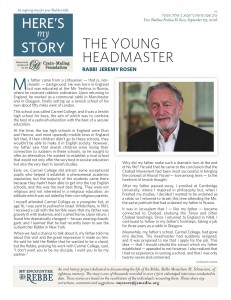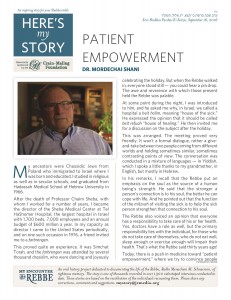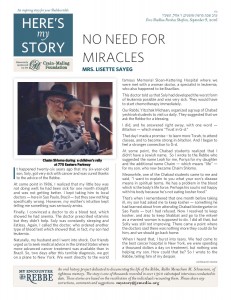Faith and Reason
I grew up in the Lower East Side of New York. At that time, it was a Jewish shtetl in every way, full of first generation immigrants, who dressed, talked and behaved as they did in Europe. But observing them and learning from them proved to be extremely valuable to me, as I had contact with authentic Judaism from an early age.
My father was a student of the Chafetz Chaim in Radun, Poland, and he guided my Torah learning. He sent me to the Rabbi Yitzchak Elchanan Yeshiva (RIETS), where I received my rabbinic ordination, and where I studied with Rabbi Pelayah, Rabbi Belkin and Rabbi J.B. Soloveitchik.
While there I merited to meet Shifra, the daughter of Rabbi Moshe Feinstein, the top Torah authority in America, and we got married. A year later – in 1949 – I was offered a part-time job teaching at RIETS, and that’s where I have been ever since. Meanwhile, I also received a doctorate in microbiology from Columbia University, where I was also offered a part-time teaching job and eventually become the chairman of the department.
Now, because I was the son-in-law of Rabbi Moshe Feinstein, I became the address for inquiries from various quarters; I was easier to reach than he was. Rabbi Hodakov, who was the secretary to the Lubavitcher Rebbe, would often call me to pass on messages, and I served as an intermediary, but I had no direct contact with the Rebbe.
One day I got a call – I believe it was sometime in 1970 – that the Rebbe wanted to see me. This audience lasted from midnight until seven in the morning, and much of that time we spent talking biology.
The Rebbe was well-versed in secular knowledge and he was up-to-date on the latest advances in science. I have to admit that he was even ahead of me when it came to physics, especially the subject of radioisotope dating of the age of the earth.
Of course, his opinion was that any data that seems to suggest the earth is older than 5,700 years old is only a test from G-d, period. He argued that the rate of decay changed at the time that the creation of the earth was completed and, therefore, scientists are making a mistake in assuming that the current rate of decay has remained the same. Of course, if the rate of decay by which we date uranium has altered over time, then this would have a huge impact on the scientific dating system.
During our conversation, the Rebbe proposed that I write a biology textbook which would be acceptable to the New York State Department of Education but which would skirt the whole issue of evolution. At that time, the study of evolution was mandatory, and students could not pass the Regents tests without answering questions about this subject. (more…)








